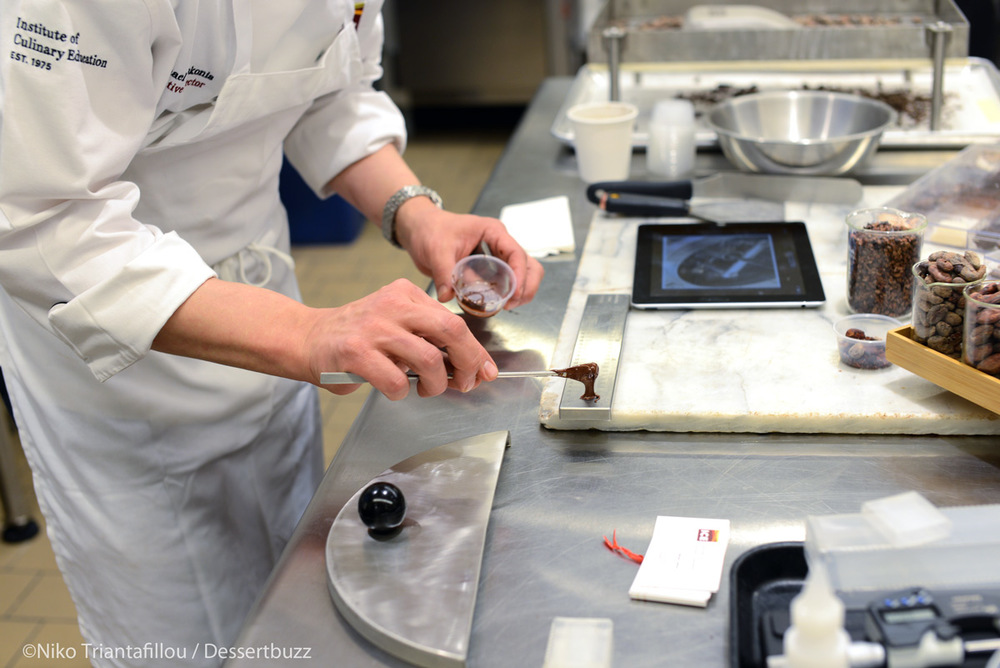Michael Laiskonis measuring the size of the particles in semi-refined chocolate. Photo courtesy Niko Triantafillou/Dessertbuzz
Ask most pastry chefs where chocolate comes from and they’ll point to a bag of Valrhona. But like, before that? I don’t know, a plant or something.
For example, Fruition Chocolate's Bryan Graham recently told me that when he went to the CIA, making chocolate was limited to “one 15-minute part of one of the lectures.” He had to figure it all out on his own. Considering that chocolate is a main ingredient in, oh, I don’t know, MOST DESSERTS, that’s madness.
One school is changing that: The Institute of Culinary Education has built an impressive new educational bean-to-bar facility, with pastry chef Michael Laiskonis at its helm. Walk into the Chocolate Lab and you’ll find Michael toiling away day and night, making chocolate from scratch with a variety of machines. ICE’s pastry curriculum now requires students to walk through the bean-to-bar process with Michael, and they’re even offering classes to the public too.
This will change the face of pastry, since presumably when people know where an ingredient comes from and how to make it, they’ll understand how to work with it even better. Michael’s even had “play dates” with pastry chefs at other NYC restaurants, and some of them want to start making their chocolate from scratch in house!
Roasting beans. Photo courtesy Niko Triantafillou/Dessertbuzz
But the most exciting part to me is that Michael is discovering and cataloguing information that big companies like Mars and Hershey’s have known for years and kept siloed. He’s keeping meticulous notes about every step of the process and how one tiny change alters everything. He’s experimenting with things like aging chocolate to see what in the heck happens, and he wants to partner with a lab to get analytics about all of the data he’s collected. “I’m looking at ingredients and preparations and trying to understand them on a scientific level,” he said. In other words, he’s chocolate’s big data scientist.
Winnowing. Photo courtesy Niko Triantafillou/Dessertbuzz
I think (I hope, at least) that Michael’s planning to share all of this with the craft industry. Historically he’s given this kind of knowledge away and collaborated with lots of people, so there’s a good chance.
But at the end of the day, no amount of money will buy you some of the best chocolate in New York. Of course, if you meet Michael in person, he’ll probably give you some for free.
Think Michael's doing something unique? Think I'm full of it? Tell me at megan@chocolatenoise.com or on Facebook or Twitter and I'll include your comments in the next Chocolate Today.
What I'm Tasting Today
Undone Chocolate Himalayan Pink Salt Bar
Read More Stories!
Fruition Chocolate: All About the Flavor



